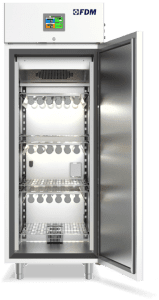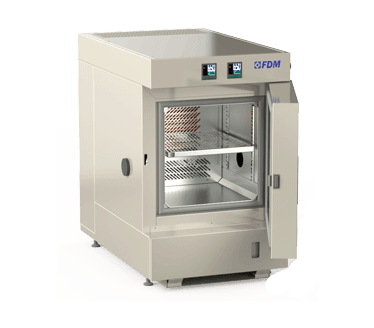
The discovery of agriculture was a fundamental moment in human history that allowed us to go from nomads to sedentaries.
At the center of this revolution was mastering the secrets of plant germination, even if at the time no one called this process that.
Throughout human history, these secrets have been increasingly clear to us but only modernity has developed a laboratory instrument capable of fully understanding them: the germination chamber.
Let's see what it's about.
What is Germination
First things first: what do we mean by germination?
Science defines it as "the return to active life of previously quiescent organisms or organs". Simply put, it is the process by which seeds begin to become plants.
In addition to the soil conditions, the success of this process is strictly dependent on some environmental parameters. Three are the most influential: temperature, relative humidity and solar illumination.
It is vital for agriculture to understand how these variables affect various types of crops. Science comes to the aid of agriculture with the germination chamber.
Illumination Chamber
Discover the latest features of FDM Growth Chambers.
How the Germination Chamber Works
Belonging to the broader class of climatic chambers, the germination chamber is a laboratory instrument consisting of a compartment hermetically sealed from the outside within which it is possible to alter, regulate and monitor a series of environmental variables.
As we have explained, the key variables of germination are temperature, relative humidity and sunlight.
With highly sophisticated technological tools, the germination chamber is able to precisely regulate the internal temperature and relative humidity levels, reaching - if necessary - values close to saturation.
The germination chambers also have different sets of lamps that simulate various intensities of sunlight. Not all crops are the same, in fact, and the lighting they require varies depending on the species and the effects you want to achieve.
Uses of the Germination Chamber
The germination chamber is mainly used for agriculture but is obviously not a means of agricultural production. The crops growing in the germination chamber are a kind of prototypes on which scientists conduct research with various objectives.
The aim is to obtain fundamental information to improve agricultural practices.
There are two most common directions of research: on the one hand, identifying the ideal conditions for the cultivation of known species, also simulating the impact of adverse or extreme conditions. On the other hand, testing new crossbreeds that can effectively respond to the challenges of the future.
In today's world, in fact, studies conducted in the germination chamber help humanity in the fight against climate change, significantly contributing to the development of more resistant and adaptable crops, promoting global food security.
You cannot find the ideal chamber for your test?
Create your own environment, according to any test requirement
The FDM Germination Chamber
FDM - Environment Makers has been a leader in the climate testing sector for 70 years.
Our germination chambers are highly professional laboratory instruments that can be designed in consultation with the customer. As we did with the University of Turin, for example. You can read the story here.
For further doubts and questions, please do not hesitate to contact us.
Would you like to receive a quote or do you have questions about the product?
Contact us to receive more information about this Product.



